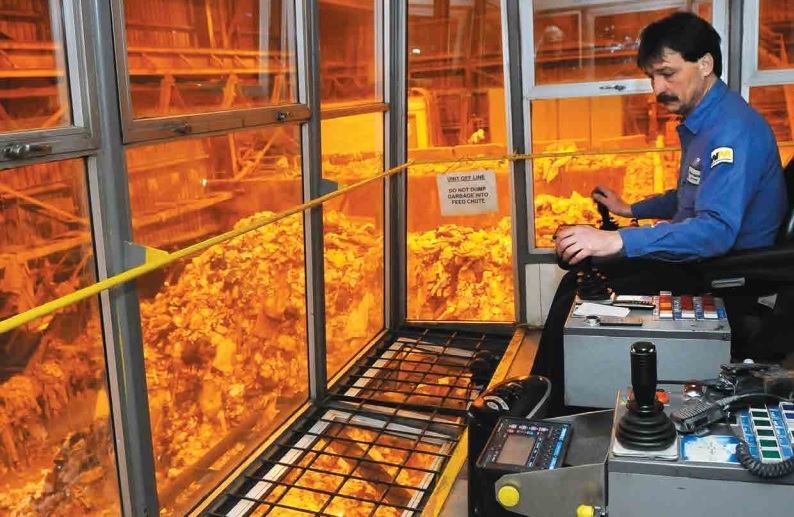Naanovo set to return in renewable energy
 |
| Naanovo is concentrating on advanced waste-to-energy solutions |
As a global energy company with roots in Canada, Naanovo’s strength lies in its waste-to-energy (WTE) and concentrated solar power (CSP) solutions that are hot issues in Vietnam these days.
Chairman, president, and CEO of Naanovo Steven J.R. Brant shared with VIR, “Our intention is to establish a subsidiary in Vietnam to develop several WTE projects which have already been identified and are presently in the planning stage in places like Thanh Hoa, Ho Chi Minh City, Quang Nam, and Phu Yen.”
Once established, and after these initial projects are underway, the Vietnamese subsidiary will expand its focus to include solar power. Initially, the emphasis will be on photovoltaic solar power as it is the most economical and can be delivered quickly at a large scale. However, CSP has several advantages in being able to store solar energy and shift power production to peak hours when it is needed most.
According to Brant, Naanovo’s hybrid WTE solutions are unique and advanced. They combine Naanovo’s proprietary WTE/Maax and BioMaax systems and were conceived in Vietnam to address the low heat value of municipal solid waste (MSW) that is typically found throughout Vietnam and ASEAN.
He added that unlike in most areas in North America and Europe where average caloric values of MSW are high (upwards of 10,000 kJ per kg), the average caloric value of MSW produced in Vietnam is very low (less than 6,000 kJ per kg). This is because the average MSW in Vietnam has very high moisture content (more than 65 per cent). This is due primarily to the fact that high-moisture organic waste fractions, consisting mainly of food scraps and garden waste, represents 60-70 per cent of the makeup of MSW in Vietnam.
The more moisture found in MSW, the lower its caloric value. The lower the caloric value, the lower the heat that can be produced in the combustion process. Since WTE/Maax combusts MSW to produce heat and steam to drive two sets of turbines and generators, the less heat there is available, the less power the system can generate.
To address this issue, Naanovo decided on separating the organic waste from the MSW and sending it to a separate disposal process using anaerobic digesters, which would raise the caloric value of the remaining waste fractions (plastic, paper, wood, rubber, and textiles, among others), thus allowing more heat to be produced in the combustion process, resulting in more electricity production.
The anaerobic digesters used to process the organic waste fractions can produce large quantities of biogas that is then used to fuel powerful generator sets to produce additional quantities of electricity. The residual material left over from the combustion process (ash) and anaerobic digestion process (digestate) can be further processed into marketable by-products, such as cinder blocks and bio-fertilisers.
Another important by-product of WTE/Maax plants is the large quantities of potable water produced through distillation in the plant’s cooling process. In addition to tipping fees charged to municipalities to process and dispose of the MSW and revenues generated from power sales, revenues generated from the sale of the by-products will help to cover the cost of the hybrid WTE/Maax system and BioMaax system and other required subsystems and generate a reasonable return to investors.
However, Naanovo’s WTE project is facing various obstacles. Brant stressed that besides the most recent pandemic delays, there were several issues that had prevented them from commencing the projects in Vietnam. They are mostly related to financing with the low tipping fees and low rates in the power purchase agreement in Vietnam. The project’s high cost and narrow margins did not present enough value for investors to mitigate Vietnam’s high country-risk.
“Fortunately, since then, the economy has improved and Naanovo has been working closely with a Canadian humanitarian funding group to secure funds for our projects in Vietnam. Recently, letters of intent for financing, which include indicative term sheets, have been obtained for the Thanh Hoa WTE project and seven others in Vietnam, totalling $1.22 billion,” said Brant.
Assuming COVID-19 is brought under control soon and travel restrictions are lifted, Naanovo will be moving quickly to commence construction on the projects in Thanh Hoa, Ho Chi Minh City, Quang Nam, and Phu Yen, to be followed shortly thereafter by the commencement of the four remaining projects identified for Vietnam. Notwithstanding, the uncertainty of when the pandemic will end and how quickly the supply chain can respond, it is anticipated that construction will commence on these priority projects in the first quarter of 2021.
What the stars mean:
★ Poor ★ ★ Promising ★★★ Good ★★★★ Very good ★★★★★ Exceptional
 Tag:
Tag:
Related Contents
Latest News
More News
- Heavy industries set for pilot greenhouse gas quotas (December 25, 2025 | 10:00)
- Swedfund invests in MSME growth and climate action in Vietnam (December 19, 2025 | 11:42)
- GreenYellow brings solar energy to light up remote schools in Tuyen Quang province (December 19, 2025 | 08:00)
- Charge+, Grab partner to develop EV charging network in Vietnam (December 18, 2025 | 17:11)
- Linking sci-tech and innovation to Vietnam’s net-zero future (December 18, 2025 | 14:31)
- Driving double-digit growth through green and circular transformation in Vietnam (December 17, 2025 | 09:00)
- Standard Chartered and ACCA deepen collaboration to develop Vietnam’s talent for a sustainable future (December 15, 2025 | 18:18)
- Schaeffler reports strong early output from Dong Nai solar project (December 12, 2025 | 15:16)
- Forestry conference highlights biodiversity and sustainability goals (December 09, 2025 | 13:35)
- Home Credit honoured among top 10 sustainable companies in trade and services (December 09, 2025 | 12:18)





















 Mobile Version
Mobile Version